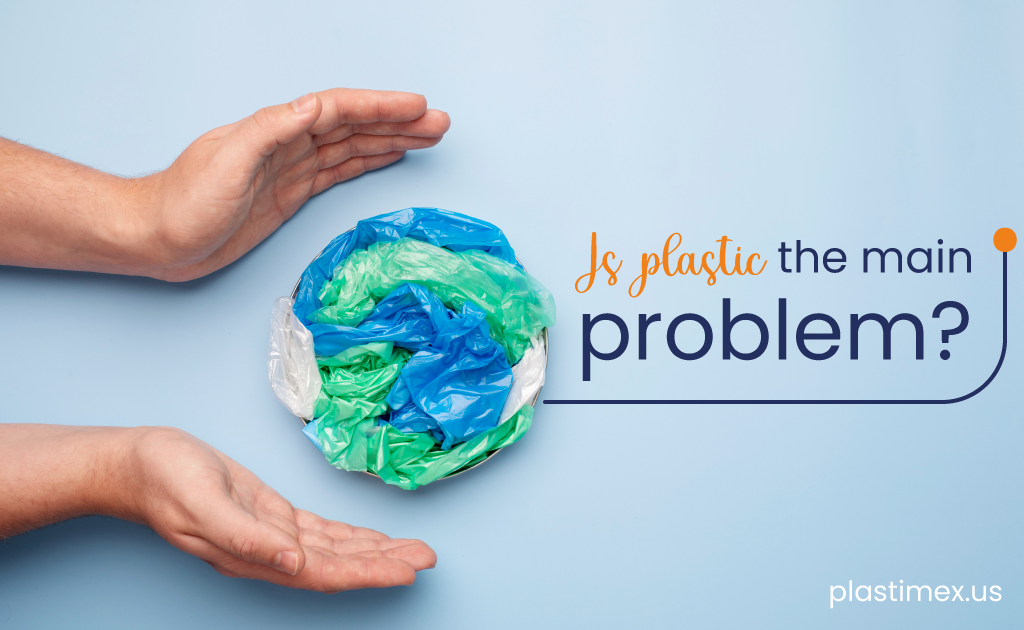El descubrimiento del plástico fue un avance significativo en la ciencia de los materiales, revolucionando la forma en que se fabrican y comercializan los productos a nivel mundial. Su versatilidad permitió la creación de productos innovadores y antes inimaginables. Debido a su bajo costo, el plástico se volvió rápidamente accesible a todos los sectores sociales, contribuyendo aún más a su uso generalizado. Sin embargo, inicialmente no se consideraron ni entendieron las implicaciones ambientales de los desechos plásticos, por eso es muy importante considerar si el plástico es realmente el principal problema o en realidad no estamos aprovechando las características que nos ofrece este material. ¡Aquí te explicamos todo lo que necesitas saber!
¿Plástico o no, qué causa realmente el problema?
La industria era en gran parte desconocida y no existía una estrategia para educar a las personas sobre la importancia de reciclar y reutilizar el plástico para proteger nuestros recursos naturales y ecosistemas.
A medida que hemos aprendido más sobre el impacto de los desechos plástico en nuestro medio ambiente, se ha vuelto cada vez más claro que se necesita una estrategia integral de educación ambiental. Esta estrategia debe tener como objetivo educar a las personas sobre la importancia de reducir, reutilizar y reciclar los desechos plásticos para preservar los recursos naturales de nuestro planeta y proteger nuestros ecosistemas.
Al aumentar la conciencia y promover prácticas sostenibles, podemos comenzar a cambiar hacia una economía circular, donde los desechos plástico se minimizan y los recursos se reutilizan y reciclan. Esto requerirá la colaboración de todos los sectores, incluidos el gobierno, las empresas y las personas.
Economía circular y plástico
La economía circular es un sistema económico que es regenerativo que tiene como objetivo principal mantener los materiales en uso durante el mayor tiempo posible, reduciendo el desperdicio y la contaminación, lo que permite aumentar el valor de los recursos que de otro modo se convertirían en basura. En el contexto del plástico,el enfoque de economía circular implica el diseño de productos teniendo en cuenta el reciclaje y la reutilización, y la creación de sistemas de circuito cerrado donde los desechos plásticos se recolectan, clasifican y procesan para crear nuevos productos.
Por lo tanto, el primer paso para lograr una economía circular para el plástico es diseñar productos teniendo en cuenta su reciclaje y reutilización. Esto significa, usar materiales que puedan reciclarse fácilmente, diseñar productos que sean fáciles de desarmar y minimizar el uso de aditivos que puedan impedir este proceso. Por ejemplo, se puede diseñar una botella de plástico para que tenga una etiqueta removible, lo que facilita su reciclaje. De manera similar, una computadora portátil puede diseñarse para tener piezas fácilmente reemplazables, lo que facilita la reparación y prolonga su vida útil.
El reciclaje no es la única solución para los residuos plástico , y no siempre es la mejor. El enfoque de economía circular también implica encontrar formas innovadoras de reutilizar los desechos plástico Por ejemplo, los desechos plástico se pueden utilizar para crear nuevos productos, como ropa, muebles y materiales de construcción. Los residuos plásticos también se pueden utilizar como fuente de energía a través de procesos como la pirólisis y la gasificación.
En conclusión, el descubrimiento del plástico ha traído avances significativos, sin embargo no se puede ignorar el impacto ambiental de los desechos plástico .Por eso es indispensable implementar una estrategia integral que enfatice la importancia de reducir, reutilizar y reciclar los desechos plásticos para promover un futuro sostenible.

